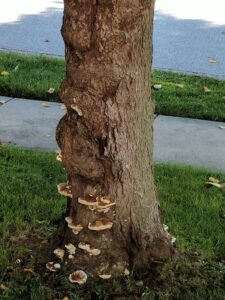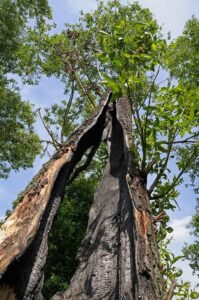What Causes Tree Stress and How to Prevent Stressing Trees
Many societies and cultures throughout human history have associated trees with resilience, sturdiness, and longevity. While trees are undoubtedly resilient, they are still vulnerable to harmful factors that can cause stress or damage. Tree stress is can result from certain adverse factors, and if left untreated, that stress can eventually lead to the tree’s death. Fortunately, many organizations, such as state departments of natural resources or conservation, are studying trees to help determine and alleviate current threats.
Current Threats to Trees and Factors of Tree Stress
Tree stress can result from several different factors. Biological elements such as insects, pests, and diseases can cause stress, as well as mechanical or human-caused factors such as improper planting, chemical use or construction.
Insects and Diseases

One of the more severe threats to trees is insects and diseases. Specific insects and diseases can have genuinely devastating impacts on the health and sustainability of trees in both forest landscapes and urban areas. The Department of Conservation and Natural Resources (DCNR) monitors Pennsylvania’s forests for insects and diseases, protecting trees when necessary.
Current insect and disease threats to Pennsylvania trees include the following:
- Emerald ash borer
- Spotted lanternfly
- Gypsy moth
- Hemlock woolly adelgid
- Beech bark disease
- Oak wilt
Emerald ash borer, spotted lanternfly, gypsy moth, and hemlock woolly adelgid are all invasive species, and have caused severe damage to Pennsylvania trees. Diseases such as oak wilt and beech bark disease each threaten specific species of trees.
Natural and Environmental Factors

In addition to insects and diseases, other natural occurrences and environmental properties can cause tree stress. One of the significant issues with environmentally-caused stress is that affected trees, even young and healthy ones, are more susceptible to diseases and invasive insects.
- External factors that can stress trees include:
- Drought
- Excessive moisture
- Pollution
- Abnormal or extreme temperatures
- Wind damage
New trees can replace those that are stressed by these environmental factors. However, invasive species such as the emerald ash borer and spotted lanternfly alter the natural reforestation cycle.
Improper Planting and Maintenance
Human-made causes of stress can be attributed to improper planting and poor or neglectful maintenance. Improper planting can range from picking the wrong tree for the local soil conditions, to planting a tree too close to a road, to having too little mulch. Poor maintenance includes inadequate watering or pruning techniques.
Another factor is injuries caused by mechanical means, such as construction or lawn-related damage. A lawnmower or trimmer cutting the bark or compacting the soil can cause tree stress. Heavy construction equipment can also stress trees, with most of the damage occurring in the root system due to soil compaction and disruption.
How to Prevent Tree Stress
One of the ways to effectively prevent stress is to be watchful for pests and other signs of stress. Look for bark dieback, wilting leaves, tree cavities, and other symptoms that a tree is injured or damaged to some extent. Insects can be hard to see, so you have to look at the overall tree health. can blend into trees. Check your trees, outdoor equipment and furniture, gardens, and similar areas for invasive species such as emerald ash borer and spotted lanternfly.
If you are unsure whether a tree is stressed or damaged, contact a certified arborist. Arborists and tree care specialists have the knowledge and experience to identify threats to a tree’s health and know what measure to take for proper care. The most effective method to treat for tree stress is to stop whatever is causing harm as soon as possible.
Call Stein for Quality and Reliable Tree Care Services
Stein Tree Service has been in business since 1983 and has a long history of serving the Pennsylvania area. Our experienced staff and state-of-the-art equipment are ready for immediate response for emergency tree care services. If you want to learn more about tree stress, or how your landscape could benefit from tree care services, contact us today for a free consultation.
CALL US
610.723.8072
Serving DE and PA
REQUEST A FREE, NO OBLIGATION CONSULTATION
FEATURED PROGRAMS
Stein Tree Earns Permit to Work in Spotted Lanternfly Quarantine Areas
Stein has a permit to work in spotted lanternfly quarantine areas in Pennsylvania and Delaware. Tree Service Companies have to be trained in proper moving and disposal of materials to avoid spread of the spotted lanternfly and Stein has completed the training courses. Learn more.
Emerald Ash Borer Inspection
In the spring, destructive emerald ash bore![]() r (EAB) adult beetles begin to emerge. These invasive pests can destroy your ash trees. Our specialists are certified to treat for EAB in Pennsylvania and Delaware. For a free consultation, contact us today.
r (EAB) adult beetles begin to emerge. These invasive pests can destroy your ash trees. Our specialists are certified to treat for EAB in Pennsylvania and Delaware. For a free consultation, contact us today.

